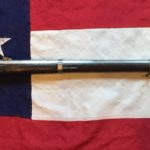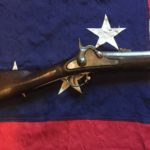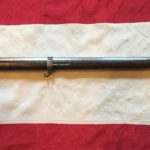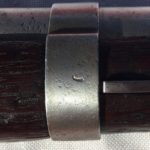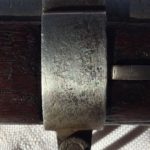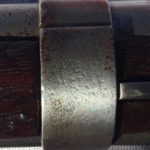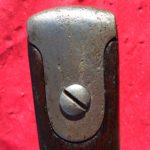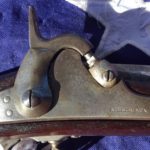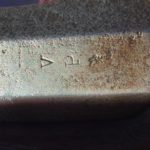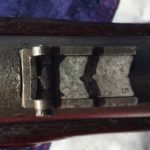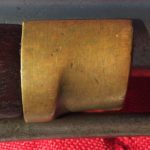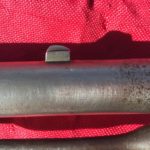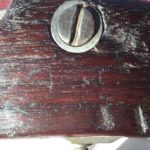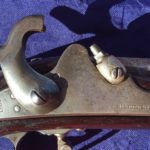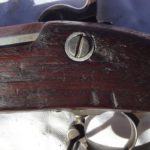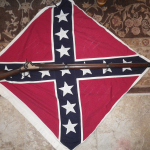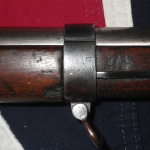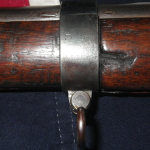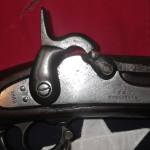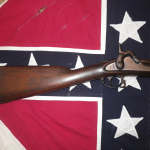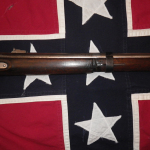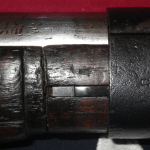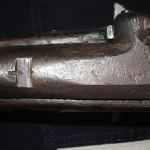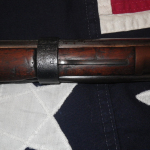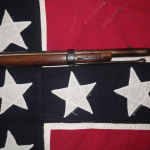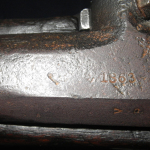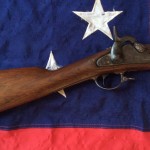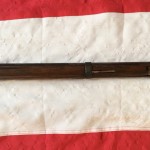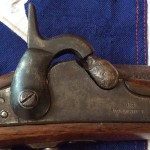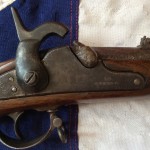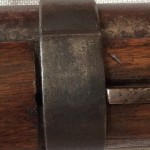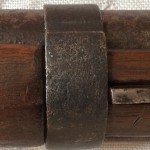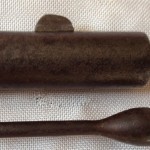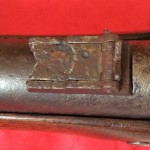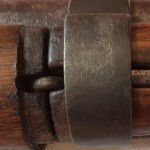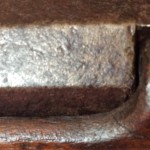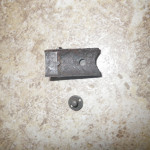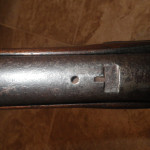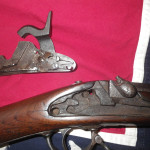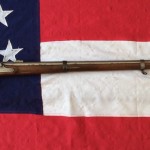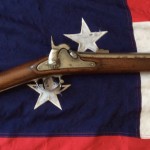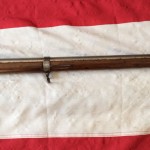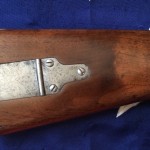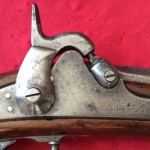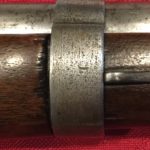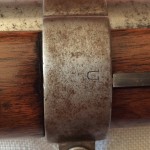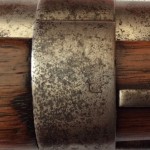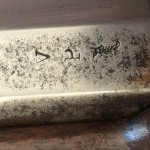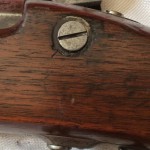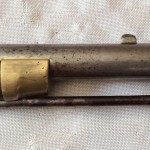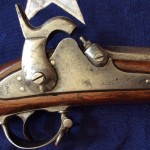- 1861 Richmond Rifle Musket
- Richmond Rifle Musket, Shoulder Stock
- Richmond Musket, Forward Stock
- 1861 Richmond Rifle Barrel Band, Offset U
- Richmond Rifle Middle Barrel Band
- 61 Richmond Forward Barrel Band
- 1861 Richmond Butt Plate
- 1861 Richmond High Hump Lock Plate
- Richmond Rifle Musket Proof Marks
- 1861 Richmond Rifle Musket, Rear Sight
- Richmond High Hump, Nose Cap
- Richmond Rifle Front Sight
- Richmond Rifle Musket Salmon Adam’s Cartouche, Close Up
- 1861 Richmond Lock Plate, Full Cocked
- Salmon Adam’s Cartouche
Approximately 2200, 61 Richmond High Humps were manufactured during the last 3 months of the year, all of these weapons lockplates were without the C.S. markings. Most all the parts used to assemble the 61 Richmond’s were ones confiscated from Harper’s Ferry during the raid by Captain Turner Ashby and his men on the 18th of April 1861.
Recently I had the opportunity to acquire a great condition 1861 Richmond Rifle Musket, it had been on my wish list for sometime. I didn’t want a representative model, I wanted the real deal with as many authentic characteristics I could find.
The stock of my new Richmond has the Maynard Primer Feed Cut and a faint but clear cartouche – SA – Salmon Adams (the Master Armoror) at Harper’s Ferry as well as the Richmond Armory, butt plate has no U.S. stamp on it, brass nose cap is screwed on and has a red hue with casting flaws, barrel has clear VP and eagle (viewed & proof) as well as the cut for the steady pin for the rear sight, the forward and middle barrel bands have no U stamped on them however the bottom band is stamped with an offset U.
With the exception of the barrel, lockplate and hammer all of the metal parts seem as though they were never polished to the standard you would expect, my best guess is the polishing machines were not set up yet, which wouldn’t prevent the weapon from functioning…..so out the door it went.
Still on my wish list is an 1864 Richmond Rifle Musket in good condition, I recently committed to another 64 Richmond Carbine which I haven’t received yet………. but should before long.
I would like to thank Paul J. Davies for his book “C.S. Armory Richmond”, his book (especially when I first started collecting Richmond’s) has helped me to be a better collector. The much sought after and often misunderstood Richmond made weapons aren’t the easiest CW weapons to collect due to all the forgeries………these days I see more fakes then authentic……..I find myself thumbing thru the pages day after day hoping to discover what I missed the day before.
Thanks for stopping by and if you have any questions about this 1861 Richmond Rifle Musket or any of the other weapons in the Civil War Arsenal feel free to contact me at www.civilwararsenal@yahoo.com attn: Gene West

